Pathogenic and Nonpathogenic Intestinal Flagellates
1/13
Earn XP
Description and Tags
Name | Mastery | Learn | Test | Matching | Spaced |
|---|
No study sessions yet.
14 Terms
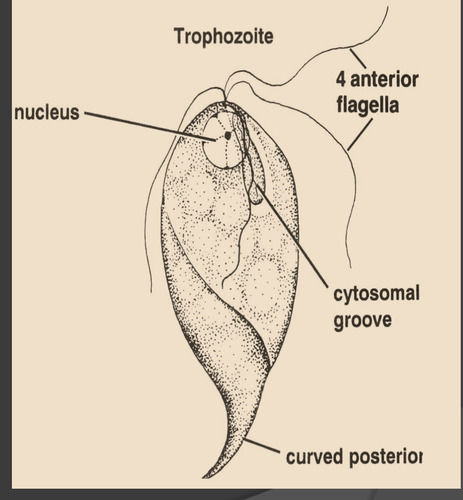
Chilomastix mesnili troph
6-24 um
pear shaped
nucleus at anterior end with large eccentric karyosome
looks like orthochromic normoblast
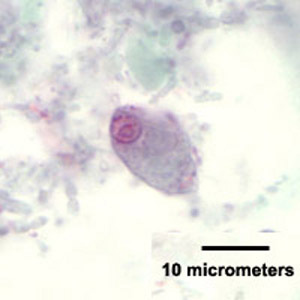
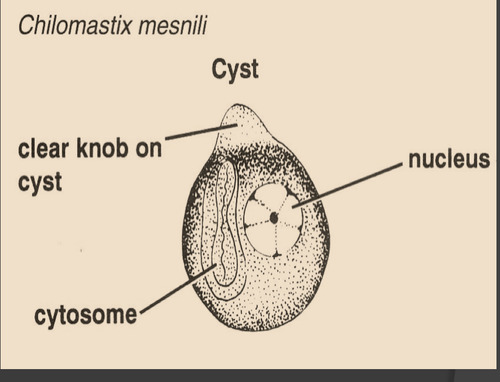
Chilomastix mesnili cyst
6-10 um
lemon shaped
large eccentric nucleus
shepherd’s crook in cytoplasm
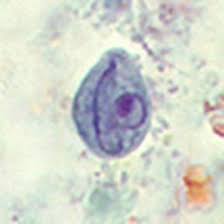
general life cycle of pathogenic intestinal flagellates
human ingests infective cyst
asexual reproduction in human
passed through stool (formed stool = cyst, liquid stool = troph)
Giardia lamblia causes—
asymptomatic carrier state to acute, severe diarrhea with malabsorption, bloating, and nausea/vomiting
incubation period and duration of infection of Giardia lamblia
incubation 5-6 days
duration of infection 1-3 weeks
chronic Giardia lamblia infection causes—
recurrent diarrhea, bloating, malabsorption, debilitation
common in immunocompromised
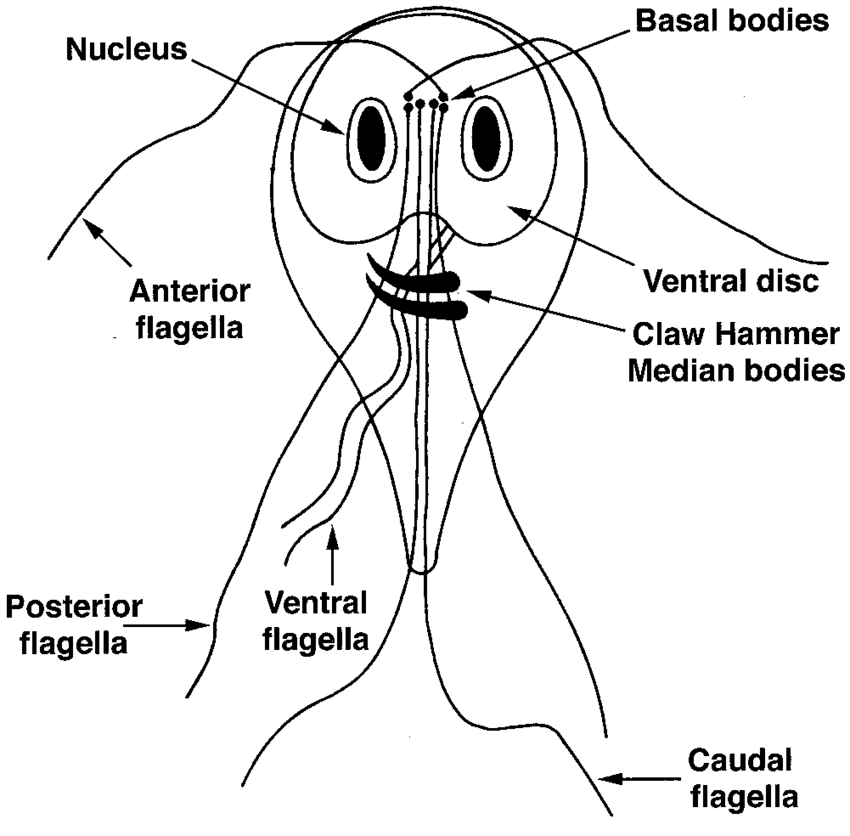
Giardia lamblia troph
9-21 × 5-15 um
pear shaped with face appearance
two nuclei
flagella may be visible
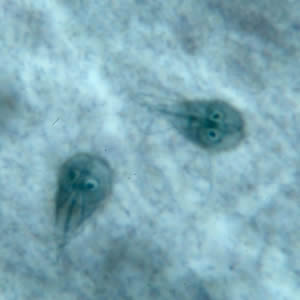
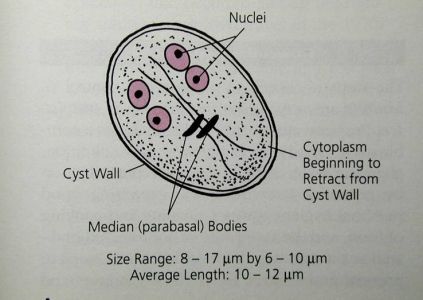
Giardia lamblia cyst
8-12 um
oval in shape
2-4 nuclei
cytoplasm pulled away from cell wall
RNA remnants or developing flagella can be seen within the cyst
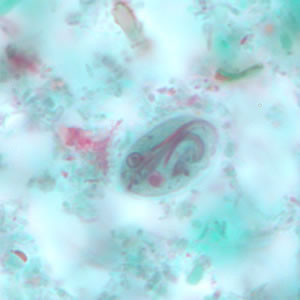
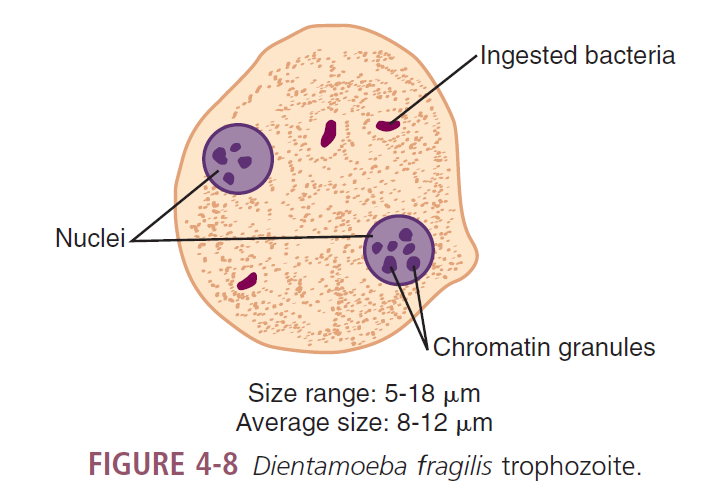
Dientamoeba fragilis troph
no cyst form
troph is 5-12 um
nucleus made of 4-8 clustered granules
transmitted via pinworm eggs or other pathogens
can be confused with E. nana
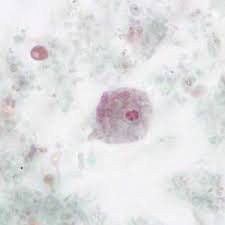
Trichomonas vaginalis is a flagellate seen mainly in _________ specimen but can also be observed in ___________
urogenital, stool
diagnosis of Trichomonas vaginalis is done by—
wet prep motile trophs with undulating membranes and jerky motion
STAT test because the organism dies within 30 minutes
EIA testing is also available
which of the pathogenic intestinal flagellates have no cyst form?
Dientamoeba fragilis and Trichomonas vaginalis

Trichomonas vaginalis troph
15-18 um
jerky motility
undulating membrane (fin-like)

nonpathogenic intestinal flagellate
Chilomastix mesnili